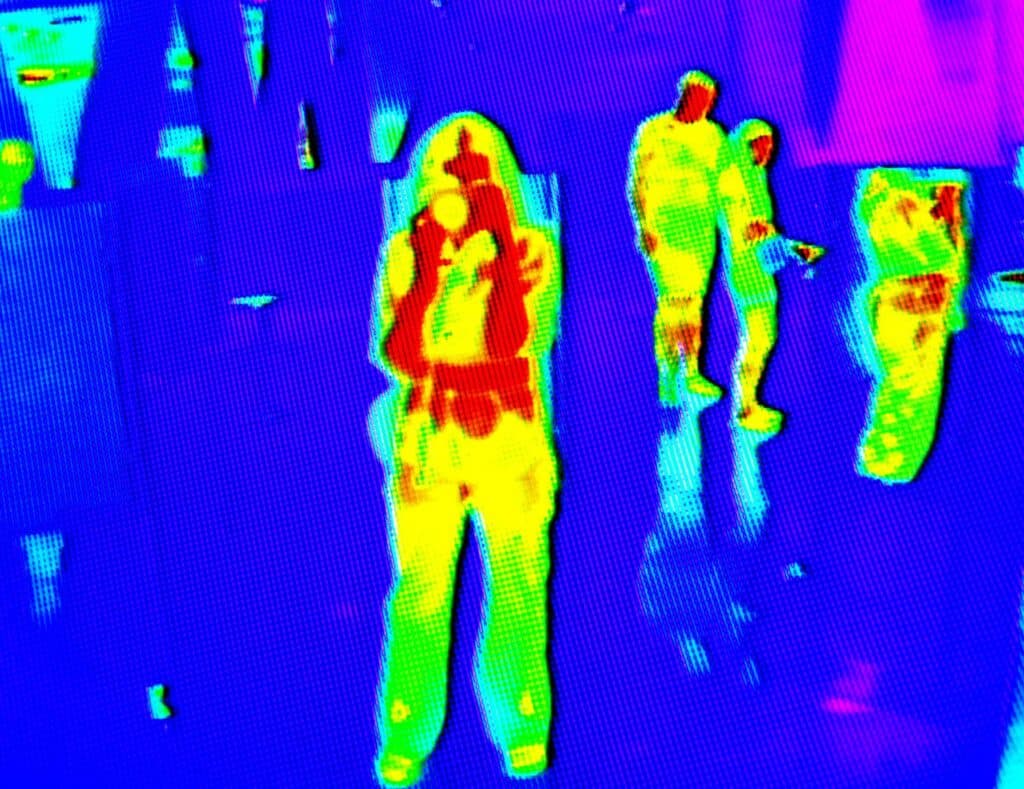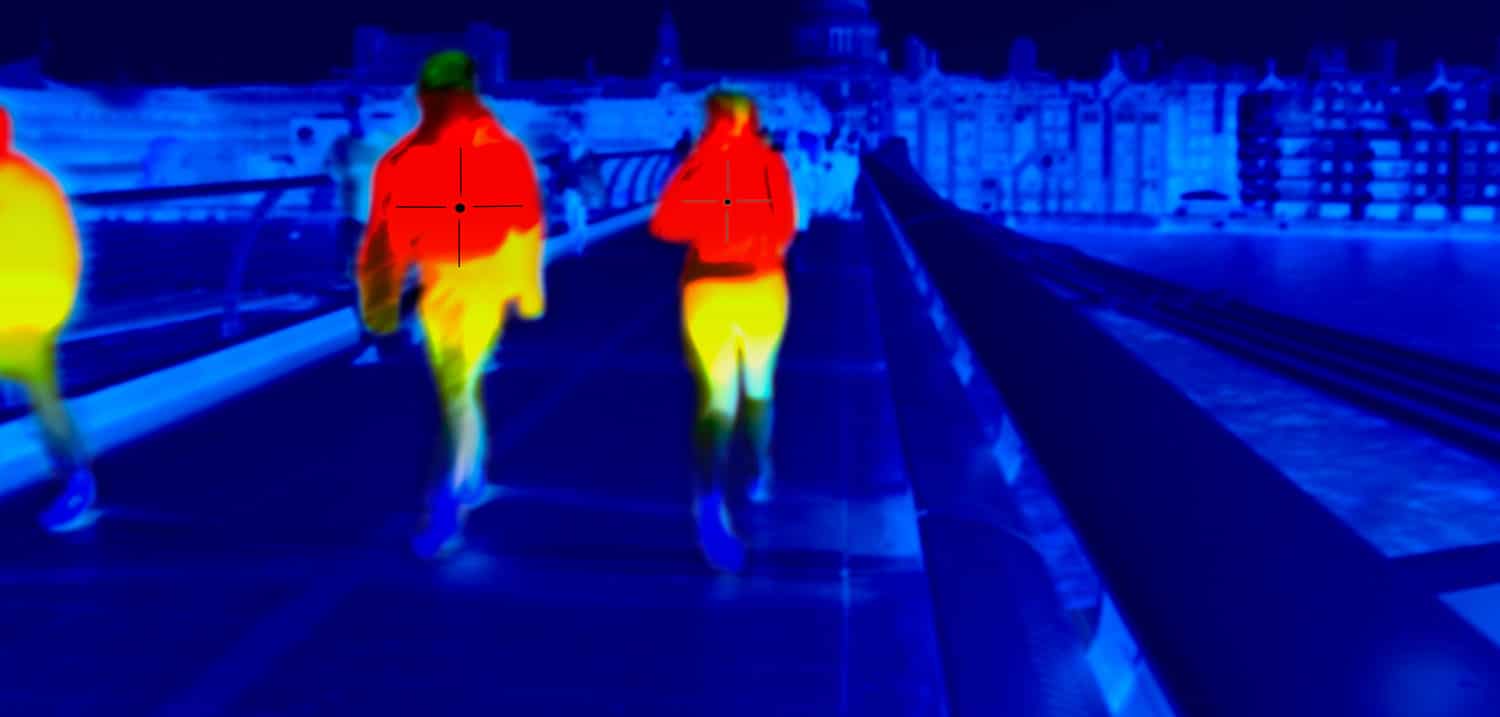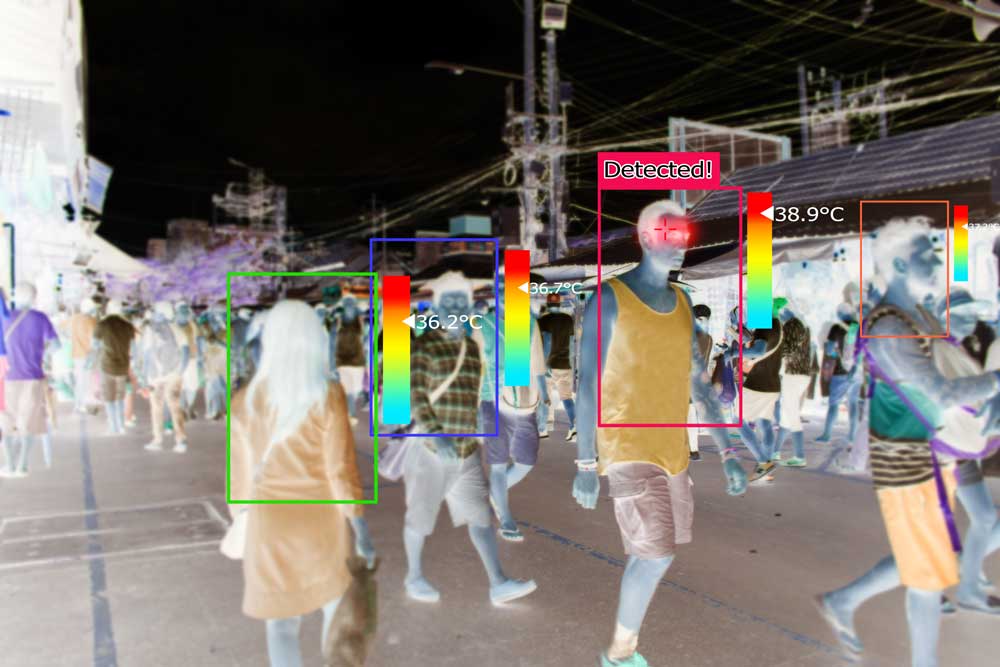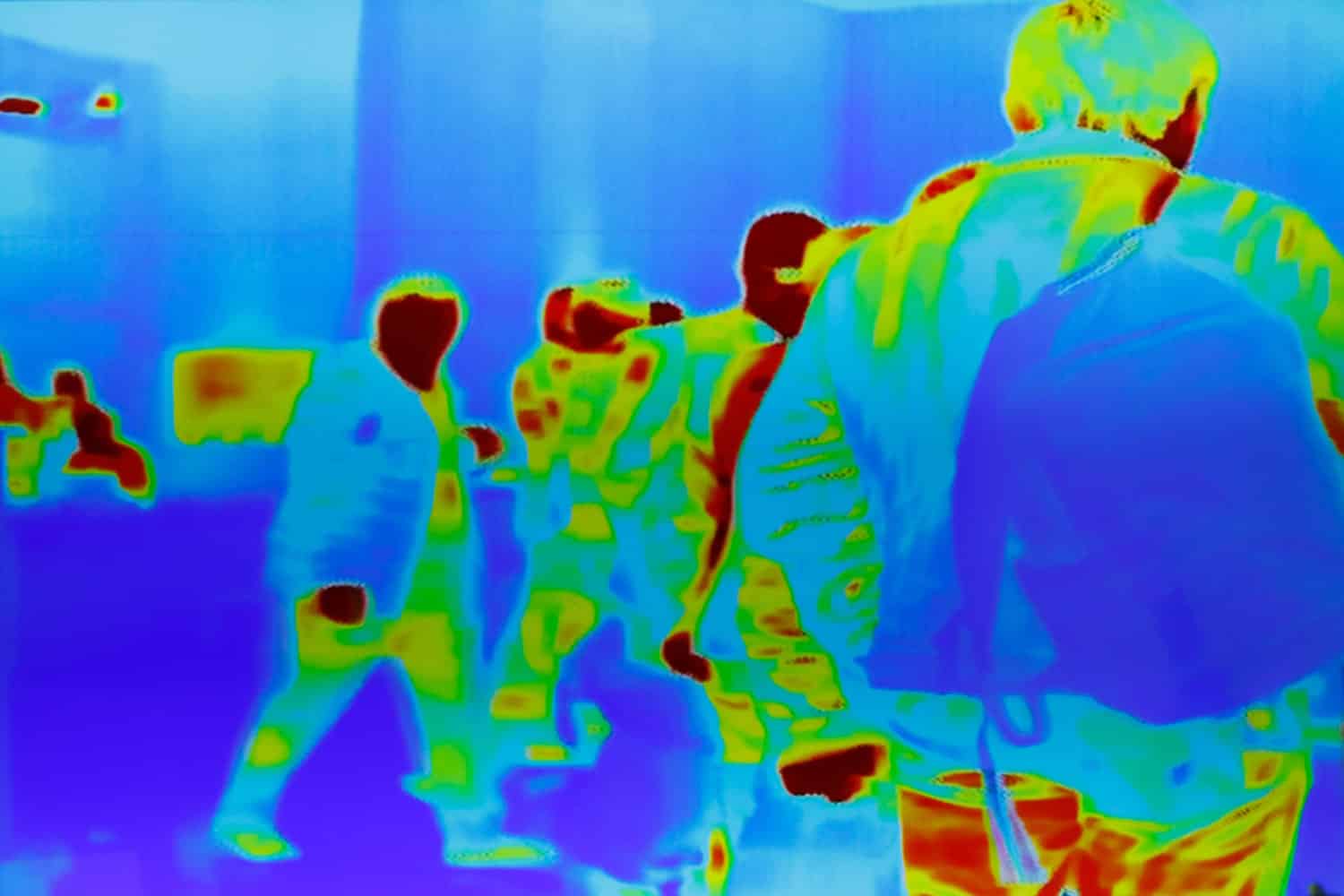How Does a Thermal IP Camera Work?
Criminals seek out the darkness to hide their exploits. Security magazine says, most violent crime still occurs at night. Thermal IP cameras, originally used in military applications, were created to track activities in low-light conditions. How do these tools help stop crime?
What is a Thermal IP Camera?
A Thermal IP Camera is a type of video surveillance camera that uses thermal technology to capture and display images based on the heat emitted by objects, people, or animals rather than relying on visible light. There are two parts to the name, and both affect camera functionality: Thermal and IP.
Thermal refers to the camera’s ability to detect infrared radiation, which is put out by all objects with a temperature above absolute zero. Unlike traditional cameras, thermal IP cameras can produce images in complete darkness, adverse weather conditions, or low visibility environments. They are often used for security and surveillance, because they detect heat signatures and provide a clear image of the surroundings, even in low light. These features make thermal IP cameras highly effective for perimeter monitoring, search and rescue operations, and industrial inspections.
In the context of the term “thermal IP camera,” the “IP” part stands for Internet Protocol. An IP camera is a video surveillance tool that can transmit and receive data over the internet or an IP network. This means that the thermal camera is equipped with networking capabilities, allowing it to connect to a network and be accessed remotely.
IP enables features such as remote monitoring, data storage on the cloud, and integration with other networked devices or systems. This connectivity allows users to access the camera’s live feed, manage settings, and receive alerts from anywhere with an internet connection, enhancing the camera’s overall functionality and accessibility.
Top Benefits of a Thermal IP Camera
Business security is an ongoing process of staying ahead of potential threats. Traditional surveillance systems often face limitations, particularly in challenging lighting conditions. However, integrating thermal IP cameras into your video surveillance network is a game-changer. This equipment can offer many benefits that can significantly enhance your business’s security measures. Here are seven benefits of using these tools.
1. 24/7 Visibility in Any Lighting Condition
One of the standout advantages of thermal IP cameras is their ability to operate effectively in low-light or complete darkness. Traditional cameras heavily rely on visible light, rendering them ineffective in scenarios with inadequate lighting. On the other hand, thermal cameras detect physical heat signatures in the dark. These tools help businesses maintain a surveillance footprint around the clock. The capability is invaluable for monitoring outdoor spaces, perimeters, and critical infrastructure, ensuring that potential threats are detected regardless of the time of day.
2. Detection of Heat Signatures
Thermal cameras excel at detecting heat, making them highly efficient in identifying intruders, wildlife, or even potential equipment malfunctions. Unlike traditional cameras that may struggle in adverse weather conditions or when faced with dense foliage, thermal imaging remains consistent. The ability to capture heat signatures allows businesses to detect unusual activity, providing an additional layer of security for sensitive areas.
3. Improved Accuracy and Reduced False Alarms
Traditional surveillance systems can be prone to false alarms triggered by moving shadows, lighting changes, or even reflections. Thermal IP cameras significantly reduce false alarms by focusing on heat signatures rather than visual cues. The improved accuracy ensures that businesses receive reliable alerts, allowing security personnel to respond promptly to genuine threats while minimizing disruptions caused by false alarms.
4. Enhanced Environmental Adaptability
Thermal cameras are less affected by environmental factors such as fog, smoke, or dust. Traditional cameras may struggle to provide clear images when visibility lessens due to these conditions. Thermal imaging remains effective, ensuring businesses maintain surveillance capabilities even in challenging weather or industrial environments. Their adaptability makes thermal IP cameras valuable for companies operating in diverse settings.
5. Broad Overview Without Additional Lighting
Thermal cameras provide a broad overview of a scene without additional lighting. This visibility is particularly beneficial in large outdoor areas where installing and maintaining adequate lighting can be challenging and costly. The ability to capture detailed images without relying on artificial lighting streamlines the surveillance process and reduces operational expenses for businesses.
6. Cost-Effective Long-Term Solution
While the initial investment in thermal IP cameras may be higher than traditional alternatives, the long-term benefits often outweigh the costs. The durability and reliability of thermal imaging technology result in lower maintenance requirements and a longer lifespan. Businesses can experience reduced operational costs over time, making these video tools a cost-effective solution for sustained security needs.
7. Application Versatility
Thermal IP cameras find applications beyond traditional security. Various industries utilize these tools. In agriculture, they help monitor crop health and detect irrigation issues. In manufacturing, thermal cameras can identify equipment anomalies and potential failures, significantly contributing to your preventive maintenance strategies. The versatility of these cameras positions them as security tools and valuable assets for optimizing business operations.
Ready to Check out Thermal IP Cameras?
Pro-Vigil is your first contact for these and other powerful video surveillance tools to protect your business. We offer complete equipment options and experienced services to keep your business safer. From design and installation to deployment and maintenance, Pro-Vigil is your turnkey provider of video surveillance networks that can help you stop crime in its tracks. Contact us to find out more.
Q&A
Thermal imaging operates by detecting infrared radiation emitted by objects. In practical terms, most thermal imaging devices detect temperatures ranging from a few degrees above freezing to several hundred degrees Celsius. The minimum temperature required for effective thermal imaging is generally above absolute zero, which is -273.15 degrees Celsius (-459.67 degrees Fahrenheit). Since absolute zero has never been achieved, this is everything. Warm-blooded creatures, like humans and other animals, have a much higher ambient temperature than objects around them.
While thermal IP cameras offer unique advantages, they also come with disadvantages. They are typically more expensive than traditional cameras. The cost has limited their widespread adoption. Thermal imaging may struggle with accurately identifying fine details or distinguishing between objects with similar temperatures. Thermal cameras are also less effective in highly reflective environments. Their inability to capture colors and reliance on heat signatures might limit their use in certain applications, such as identifying specific objects or people. Calibration challenges and the potential for false positives in complex environments are also drawbacks. Despite these limitations, advancements continue to address these issues, expanding the practicality of thermal cameras. As these cameras increase in popularity, prices should also go down.











